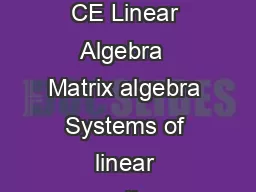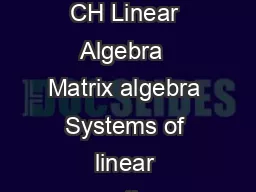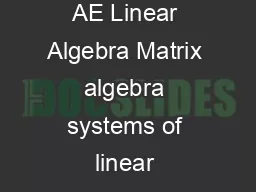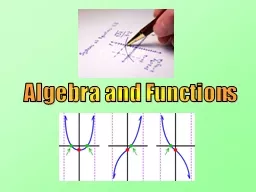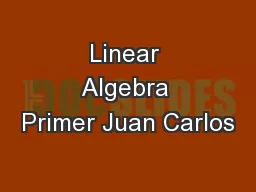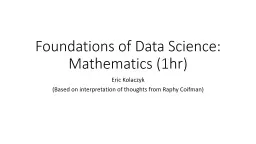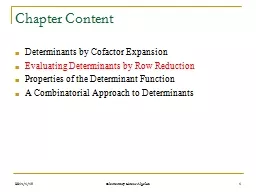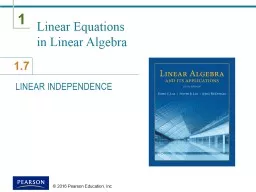PPT-Linear Algebra Primer Professor
Author : min-jolicoeur | Published Date : 2019-06-26
FeiFei Li Stanford Vision Lab 23Sep14 1 Another very indepth linear algebra review from CS229 is available here http cs229stanfordedusectioncs229linalgpdf And a
Presentation Embed Code
Download Presentation
Download Presentation The PPT/PDF document "Linear Algebra Primer Professor" is the property of its rightful owner. Permission is granted to download and print the materials on this website for personal, non-commercial use only, and to display it on your personal computer provided you do not modify the materials and that you retain all copyright notices contained in the materials. By downloading content from our website, you accept the terms of this agreement.
Linear Algebra Primer Professor: Transcript
Download Rules Of Document
"Linear Algebra Primer Professor"The content belongs to its owner. You may download and print it for personal use, without modification, and keep all copyright notices. By downloading, you agree to these terms.
Related Documents


